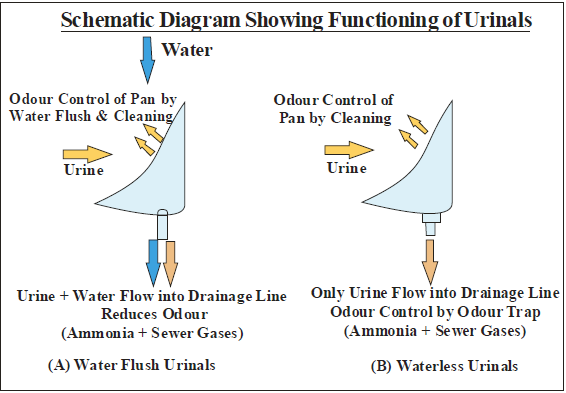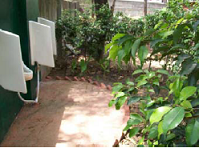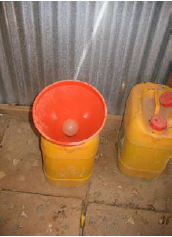
Waterless urinals (WLU) save water, energy and use urine as resource ( Image courtesy: R Sakthivel)
This resource book is a guide on ‘waterless urinals’ (WLU), that will assist individuals, builders, engineers, architects, and policy makers in promoting them. It presents the benefits of harvesting urine for reuse through waterless urinals and urine diverting toilets.

Schematic drawing showing functioning of conventional and waterless urinals
This ecological sanitation method does not require water for flushing, thus saving between 56,800 litres to 1, 70,000 litres of water per urinal per year. It includes the following sections:
Advantages of waterless urinals and reuse of urine
- Saves enormous quantities of freshwater
- Enhances efficiencies of sewer lines and wastewater treatment plants
- Optimizes cost of plumbing accessories at supply & consumption ends
- Conserves electricity used for pumping water & treating wastewater
- Replaces chemical fertilizers with urine to grow crops
- Produces fertiliser & other chemicals from urine (industrial feedstock)
- Recovers hydrogen for producing energy and fuel
- Reduces emission of green house gases and pollution of water bodies
Functioning
Water is employed to control odour in the conventional urinals whereas waterless urinals utilise odour control mechanisms like sealant liquid or membrane traps and biological blocks. A comparative analysis of popular odour traps with regard to cost, maintenance, replacement and clogging frequency is given in a tabular form. Steps for installation of these WLU ,storage and maintenance details are elaborated in the guide book.
Innovative urinal designs
The following innovative urinal designs can be promoted as per the feasibility and budget available:
- Waterless Public Urinal Kiosk (WPUK): A stand‐alone concrete reinforced pre‐fabricated urinal kiosk which can be installed in public places and institutions that are cheap and robust

Green Waterless Urinal (GWU): A low‐cost onsite urine application model suitable for sites where adequate space is available and the number of users are limited. Urine collected is diverted to a plant bed of Canna Indica and Ficus planted around the urinal.

- Self Constructed Urinal: A simple option of creating waterless urinals in rural areas. “Eco‐lily” is one such model promoted in some parts of Africa
Urine diverting toilets
These facilitate separation of urine from faeces and wash‐water and its advantages are as follow:
- harvesting of nutrients present in urine and faeces
- saving of water used for flushing
- saving of energy required for water and waste water treatment
- minimising ground water pollution
Urine harvesting for agriculture
Urine harvested by constructing waterless urinals and urine diverting toilets can be utilised as a resource in agriculture depending on the quantity produced and the quality. However precautions need to be taken while using urine as a fertilizer.

Manually operated reactor for recovery of struvite (Image source: EAWAG)
Some of the methods used are direct application, deep Injection, drip irrigation, struvite (a fertiliser in solid form, obtained by adding magnesium chloride to urine) and composting (urine can be added to compost to enrich its nutrient values and also for quickening the composting process).
Challenges and the way forward
- Institutions and public places: Installation of waterless urinals should be made mandatory for institutions and public places.
- Building code for houses: Installation of waterless urinals as an integral component of toilets in individual houses should be made mandatory for large houses with several toilets
- Female urinals: Innovative designs of waterless urinal designs are yet to be developed for meeting the requirements of female population.
- Industrial application of urine: Apart from the use of urine in agriculture, industrial applications using human urine need to be developed to utilise the urine harvested by installing waterless urinals
- Awareness: Awareness among builders, engineers, architects, town planners and policy makers is essential to promote waterless urinals on a large scale. Efforts to popularise the concept can result in large scale replication of waterless urinals across the country.
- Maintenance: Undertaking proper maintenance routines of waterless urinals installed is essential for ensuring their effective functioning